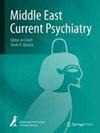A study of predictors of retention to naltrexone maintenance therapy in patients with opioid use disorder: a prospective study
IF 1.6
Q3 PSYCHIATRY
引用次数: 0
Abstract
Naltrexone prophylaxis is a well-established treatment for opioid use disorder. Our study aimed to track patients on naltrexone and investigate the factors predictive of retention. The study comprised 100 participants initiated on naltrexone, who underwent a 12-week follow-up. We analyzed a range of socio-demographic and clinical variables at 04 and 12 weeks to compare those who remained in treatment program with those who experienced relapse. The results revealed a predominantly young, unmarried, male, rural-dwelling sample with heroin as the primary opioid. Intravenous use was common (75%), with 57% of the participants exhibiting positive serology results for infections by hepatitis C (HCV), hepatitis B (HBV), and/or human immunodeficiency virus (HIV), and a significant proportion initiating opioids before the age of 20 (31%). The retention rates at 04 and 12 weeks were 83% and 64%, respectively. Several socio-clinical factors including age of initiation of use, rural residence, and comorbid psychiatric illness significantly influenced retention at 04 and 12 weeks. The findings highlight the importance of tailored interventions that take into consideration the age, residence, socio-economic status, and psychiatric comorbidity to enhance retention rates. Identifying these factors can help improve the effectiveness of treatment programs and promote sustained recovery efforts.阿片类药物使用障碍患者继续接受纳曲酮维持治疗的预测因素研究:一项前瞻性研究
纳曲酮预防治疗是一种行之有效的阿片类药物使用障碍治疗方法。我们的研究旨在跟踪服用纳曲酮的患者,并调查预测患者继续服用的因素。研究包括 100 名开始服用纳曲酮的患者,他们接受了为期 12 周的随访。我们分析了第 04 周和第 12 周的一系列社会人口学和临床变量,以比较那些仍在接受治疗的患者和那些复发的患者。结果显示,样本主要为年轻、未婚、男性、农村居民,主要阿片类药物为海洛因。静脉注射很常见(75%),57%的参与者丙型肝炎(HCV)、乙型肝炎(HBV)和/或人类免疫缺陷病毒(HIV)感染血清学结果呈阳性,很大一部分人在 20 岁之前就开始服用阿片类药物(31%)。04 周和 12 周的保留率分别为 83% 和 64%。一些社会临床因素,包括开始使用阿片类药物的年龄、农村居住地和合并精神疾病,对第 04 周和第 12 周的保留率有显著影响。研究结果突出表明,考虑到年龄、居住地、社会经济地位和精神疾病合并症等因素,采取有针对性的干预措施对提高保留率非常重要。找出这些因素有助于提高治疗计划的有效性,促进持续康复。
本文章由计算机程序翻译,如有差异,请以英文原文为准。
求助全文
约1分钟内获得全文
求助全文
来源期刊

Middle East Current Psychiatry
Medicine-Psychiatry and Mental Health
CiteScore
3.00
自引率
0.00%
发文量
89
审稿时长
9 weeks
 求助内容:
求助内容: 应助结果提醒方式:
应助结果提醒方式:


